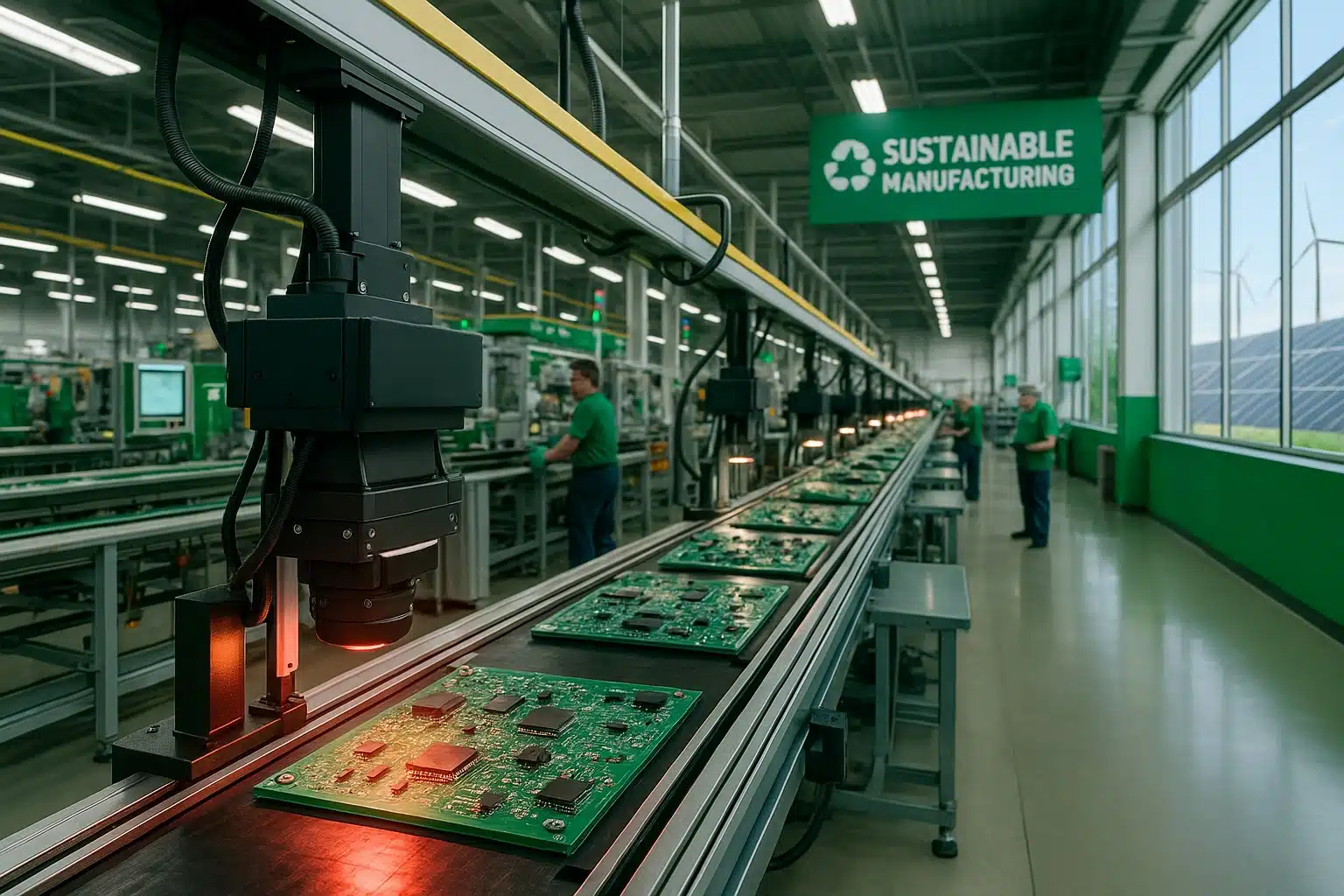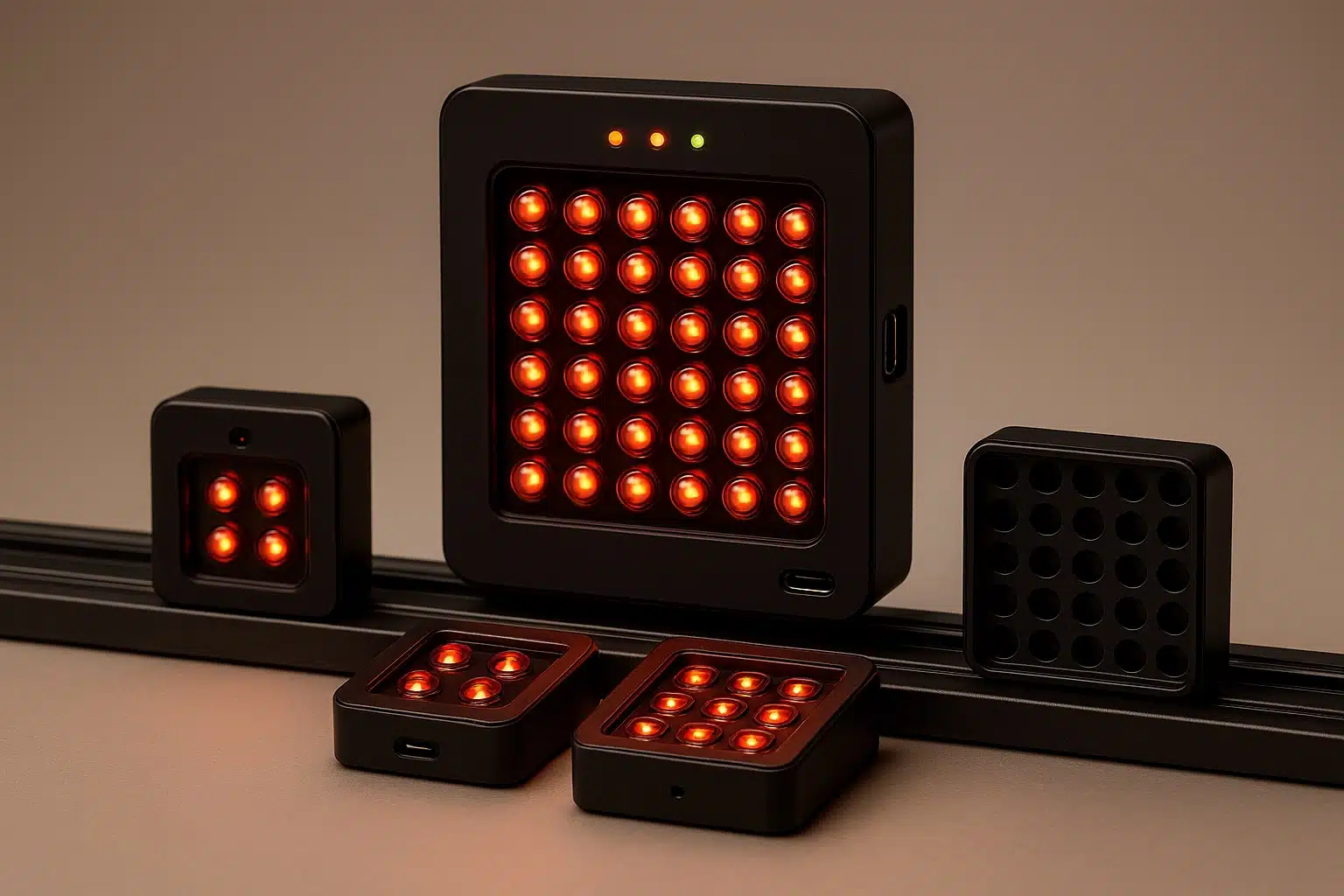In the quest for The development of sustainable tech is crucial for a sustainable future., adopting a circular economy mindset can greatly reduce waste and resource use. Near-infrared (NIR) LEDs are a prime example: they deliver high efficiency and extremely long lifespans, meaning fewer replacements and less discarded hardware. In fact, as one lighting guide observes, LED lighting produces “fewer greenhouse gas emissions” than conventional fixtures and contains “no hazardous materials such as mercury”. By eliminating toxic substances and boosting efficiency, NIR LEDs advance circular goals from the ground up. For background on IR lighting fundamentals, see our Near Infrared LED Guide.

Material Reuse & LED Tech (long life means less waste)
NIR LEDs excel in longevity and efficiency, making them a key component in reducing the environmental footprint of lighting solutions. Industry data show top-quality LEDs often run 3–5× longer than older lamps, with lifespans approaching 100,000 hours. This directly cuts waste: fixtures last far longer between replacements. For example, on a recent project 850 nm LEDs inspected sealed pill blister packs and detected missing tablets through the foil, allowing the line to reject bad packs and thereby prevent waste from defective units.
- Extreme Longevity: Premium NIR LEDs can run on sustainable technology, ensuring lower energy consumption. 50,000–100,000 hours. That translates into decades of use in many installations, drastically reducing the footprint of the linear economy by minimizing the number of fixtures manufactured and thrown away.
- High Efficiency: LEDs convert electricity to light (or IR) very efficiently. An academic study found that LED fixtures can achieve “luminaire efficacy more than four times higher” than comparable fluorescent setups, cutting energy use and emissions.
- Robust Design: NIR LEDs have no fragile glass or filaments. Their solid-state structure makes them rugged under shock and vibration, and safe to handle at end-of-life without breakage.
Manufacturing Considerations
Recyclability of LED components
LED luminaires are made from recoverable materials. For instance, semiconductor chip substrates from spent LEDs can be reclaimed into new components, and scrap aluminum housings or copper circuit boards from old fixtures can be melted down for reuse. Some manufacturers even engineer their products for easy disassembly: for example, Signify (formerly Philips) highlights certain LED fixtures with “no glue and no potting”, allowing electronics to be separated and recycled without damage.
Reducing hazardous materials (no mercury)
Unlike fluorescent and HID lamps, NIR LEDs contain sustainable design principles that enhance their efficiency. no toxic mercury or lead. They are simple solid-state diodes made of inert semiconductors and glass, minimizing their environmental impact. This makes a big difference for safety and recycling: LED lamps produce no toxic vapors and thus do not require special handling. As one industry guide notes, LEDs contain “no hazardous materials such as mercury”, making them far safer to recycle. Removing toxic elements also helps products meet strict environmental regulations (like RoHS and WEEE standards), thereby reducing their environmental impact.
Product Lifecycle (reuse, refurbishment, upgrades)
Extending product life is central to circularity, and LED systems are designed for it. Modern LED luminaires often allow individual parts to be serviced or swapped. For example, Philips now offers fixtures with replaceable drivers and upgradable firmware, so a single failing component can be replaced without discarding the whole unit. Some companies even rebuild entire systems: Philips’ “Circular Edition” program professionally refurbishes used lighting for resale. These approaches—fixing or renewing modules instead of replacing entire units—help devices stay in use longer.
- Module Swapping: Some LED fixtures are built from separate modules (LED array, lens, electronics) that can be individually replaced or upgraded.
- Firmware Updates: Networked NIR LED systems can receive new software features remotely, adding functionality and prolonging life, which supports sustainable development.
- Refurbishment Services: Programs like Philips’ Circular Edition professionally repair and rebuild end-of-life devices, giving them a second life in new installations.
Example Initiatives
Across the industry, companies and regulators are creating programs to close the loop on LED products. Many manufacturers now offer take-back schemes: for example, a lighting industry blog notes that many brands actively “accept old bulbs for recycling” under these programs. Global firms like Philips and Signify also support formal e-waste collection efforts (WEEE) to ensure lighting products are processed responsibly. Even local governments and retailers have introduced LED collection points to make recycling easier for end users.
Innovating for Circularity
Design innovations are pushing circularity even further. For example, the EU-funded Repro-Light project Developed stackable, reconfigurable LED luminaires embody sustainable design: users can add or replace modules (LED panels, optics, sensors) on the fly, reducing waste. This ensures a luminaire “will not go out of fashion”, since its core hardware and software can be upgraded after purchase. Signify’s own products are similarly modular: they include easily exchangeable boards and support firmware updates, promoting sustainable design by allowing new features to be added without replacing the entire fixture.
- Modular Design: Fixtures built in interchangeable blocks (housing, LED panel, lens) let operators reconfigure lighting systems for new tasks instead of discarding old equipment.
- Upgradeable Electronics: Luminaires include connectors and software interfaces so new sensors or control features can be integrated over time, prolonging service life.
- Demountable Units: Designs that separate the LED board from the driver allow reuse of the core LED array in different future systems.
- Service Contracts: Some providers now lease lighting as a service, handling upgrades and taking back lamps at end-of-life to ensure they are fully recycled.
FAQ
What is the circular economy and why does it matter for LEDs?
A circular economy focuses on reducing waste through effective waste management by reusing and recycling materials. For LEDs, this means designing products that last longer and can be easily disassembled. Because NIR LEDs consume less power and contain no mercury, they naturally fit into circular strategies: you replace bulbs far less often, and any end-of-life parts can be reclaimed for new use.
How do NIR LEDs contribute to sustainability?
NIR LEDs are energy-efficient and long-lived. They often achieve 3–5x the lifespan of older lamps, significantly saving on replacements and contributing to sustainable development. And because they convert more power to usable light (or IR) with minimal waste heat, they reduce electricity use and associated CO2 emissions. In short, they operate with high efficiency and longevity, aligning with green goals.
Can you recycle NIR LED lighting products?
Yes. NIR LEDs contain mostly metals and semiconductors, all of which are recyclable. Many parts of an LED system (aluminum chassis, copper in boards, semiconductor chips) are routinely recovered. Global manufacturers support waste management and recycling: for example, Philips runs a recycling infrastructure and participates in e-waste programs so that lamps are collected and recycled.
What initiatives exist for LED take-back and recycling?
There are growing take-back and recycling programs that support sustainable development and reduce waste in the linear economy. Many lighting companies partner with recyclers to accept old LEDs. Industry consortia like the UN’s STEP initiative (including Philips, Dell, etc.) are working towards a sustainable future. promote recycling standards. On a local level, some municipalities and retailers have drop-off services for lamps. Some businesses offer LED collection services to help facilities recycle responsibly.
How do LED innovations like modular design support circularity?
Modular LED designs let you upgrade or repair parts instead of scrapping entire fixtures. For example, projects like Repro-Light have stackable, reconfigurable luminaires where users can swap LED modules or add optics. They also use software updates to extend life. Such features prevent premature obsolescence and keep devices in use longer.
Ready to put NIR LEDs to work in your sustainable projects? Contact Tech-LED for expert guidance on circular lighting solutions.
